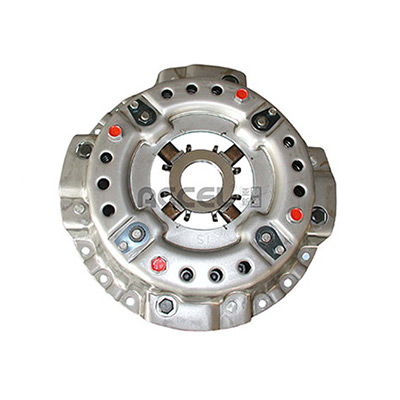- Arabic
- French
- Russian
- Spanish
- Portuguese
- Turkish
- Armenian
- English
- Albanian
- Amharic
- Azerbaijani
- Basque
- Belarusian
- Bengali
- Bosnian
- Bulgarian
- Catalan
- Cebuano
- Corsican
- Croatian
- Czech
- Danish
- Dutch
- Afrikaans
- Esperanto
- Estonian
- Finnish
- Frisian
- Galician
- Georgian
- German
- Greek
- Gujarati
- Haitian Creole
- hausa
- hawaiian
- Hebrew
- Hindi
- Miao
- Hungarian
- Icelandic
- igbo
- Indonesian
- irish
- Italian
- Japanese
- Javanese
- Kannada
- kazakh
- Khmer
- Rwandese
- Korean
- Kurdish
- Kyrgyz
- Lao
- Latin
- Latvian
- Lithuanian
- Luxembourgish
- Macedonian
- Malgashi
- Malay
- Malayalam
- Maltese
- Maori
- Marathi
- Mongolian
- Myanmar
- Nepali
- Norwegian
- Norwegian
- Occitan
- Pashto
- Persian
- Polish
- Punjabi
- Romanian
- Samoan
- Scottish Gaelic
- Serbian
- Sesotho
- Shona
- Sindhi
- Sinhala
- Slovak
- Slovenian
- Somali
- Sundanese
- Swahili
- Swedish
- Tagalog
- Tajik
- Tamil
- Tatar
- Telugu
- Thai
- Turkmen
- Ukrainian
- Urdu
- Uighur
- Uzbek
- Vietnamese
- Welsh
- Bantu
- Yiddish
- Yoruba
- Zulu
nov. . 06, 2024 03:20 Back to list
Advancements in Rubber Transmission Belt Technology for Improved Industrial Applications
Understanding Rubber Transmission Belts A Comprehensive Guide
Rubber transmission belts play a pivotal role in the mechanics of various machines, providing an efficient and reliable means of transferring power and motion between different components. In industries ranging from automotive to manufacturing, these belts are essential for the smooth operation of machinery. This article explores the significance, types, applications, and maintenance of rubber transmission belts.
What are Rubber Transmission Belts?
Rubber transmission belts are flexible loops made predominantly from rubber materials, designed to transmit power between rotating shafts. These belts are integral to mechanical systems, facilitating the movement of energy in a varied array of applications—from conveyor systems and industrial machinery to automotive engines. Their design allows for high levels of flexibility and adaptability to different operational needs.
Types of Rubber Transmission Belts
There are several types of rubber transmission belts, each suited for specific applications
1. V-Belts V-belts have a trapezoidal cross-section which allows them to wedge into pulley grooves. They offer high friction and can transmit a significant amount of power. Their design allows for multiple belt usages, making them ideal for heavy industrial machinery.
2. Flat Belts Flat belts are simple, rectangular in cross-section and designed to run on smooth pulleys. They are often used in smaller equipment or where space is limited, providing a basic level of power transfer for lighter loads.
3. Timing Belts These belts feature teeth that fit into the grooves of the pulleys, ensuring synchronous motion between the driving and driven shafts. Timing belts are crucial in applications where precise timing is necessary, such as in automotive engines.
4. Poly-V Belts Also known as serpentine belts, these have multiple ribs which allow them to operate efficiently on smaller pulleys. They are often used in automotive applications to drive various accessories like alternators, water pumps, and air conditioning compressors.
Applications of Rubber Transmission Belts
Rubber transmission belts are utilized across diverse industries. In the automotive sector, they are essential for driving engines, crankshaft, water pumps, and more. In manufacturing, these belts are widely used in conveyor systems, enabling the transport of goods and materials with efficiency.
In agricultural machinery, rubber belts help transmit power from the engine to various parts of the equipment, improving productivity. Additionally, they are employed in the textile industry for driving machines and in food processing for transferring products along production lines.
Advantages of Rubber Transmission Belts
rubber transmission belt

The benefits of using rubber transmission belts are numerous
- Flexibility Rubber belts can bend and twist, accommodating various driving angles and configurations, making them suitable for numerous applications.
- Durability They are designed to withstand harsh operating conditions, including exposure to heat, humidity, and various chemicals.
- Cost-Effectiveness Rubber belts are generally more affordable than alternatives such as metal chains or gears, providing a budget-friendly option for power transmission.
- Minimal Maintenance Rubber transmission belts require less maintenance compared to other mechanical systems, leading to lower operational costs over time.
Maintenance of Rubber Transmission Belts
To ensure optimal performance and longevity of rubber transmission belts, regular maintenance is essential. Key maintenance tips include
- Regular Inspections Check for signs of wear, such as cracks, fraying, or glazing. Identifying issues early can prevent machine failure.
- Proper Tensioning Ensure belts are installed with the correct tension. Too loose or too tight can lead to premature wear and decreased efficiency.
- Cleanliness Keep the belt and pulleys free from debris, oil, and dust, which can hinder performance and cause damage.
- Replacement Timely replacement of worn belts is crucial for maintaining operational integrity.
Conclusion
Rubber transmission belts are a fundamental component of many mechanical systems, offering a reliable means of power transmission across various industries. Understanding their types, applications, and maintenance techniques is essential for maximizing their efficiency and ensuring longevity. By integrating proper care practices, businesses can ensure their rubber belts continue to perform optimally, contributing to smoother operations and reduced costs.
-
Korean Auto Parts Timing Belt 24312-37500 For Hyundai/Kia
NewsMar.07,2025
-
7PK2300 90916-T2024 RIBBED BELT POLY V BELT PK BELT
NewsMar.07,2025
-
Chinese Auto Belt Factory 310-2M-22 For BMW/Mercedes-Benz
NewsMar.07,2025
-
Chinese Auto Belt Factory 310-2M-22 For BMW/Mercedes-Benz
NewsMar.07,2025
-
90916-02660 PK Belt 6PK1680 For Toyota
NewsMar.07,2025
-
drive belt serpentine belt
NewsMar.07,2025

